Hearing aid battery
There are two main types;

1.Rechargeable batteries
2.Standard, one-time use batteries

As the power source for your hearing aids, batteries are vital to the functioning of your hearing aids. Today, let’s take a look at some basic knowledge about hearing aid batteries.
01 Rechargeable batteries
Many of the latest models of hearing aids come with rechargeable lithium-ion batteries. These batteries are usually charged at night, when the hearing aid wearer takes out their hearing aids to sleep. They are available in both BTE and in-the-ear models.
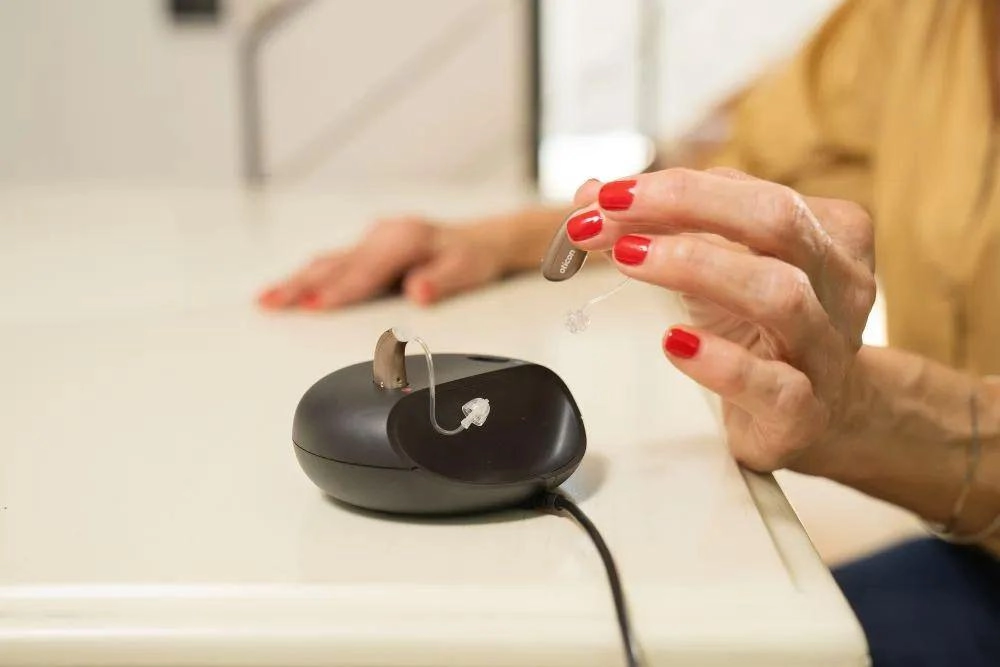

Q1: How do rechargeable hearing aids work?
The working principle of rechargeable hearing aids is very similar to that of smartphones, and you must charge them regularly to keep them functioning. Every night, just take out “your ears”, plug them into the charger, and go to bed. In the morning, they should be ready for another day.
Q2: How long can rechargeable hearing aid batteries last?
After each charge, rechargeable hearing aids can generally be used for 8 to 20 hours, varying by hearing aid brand and model.
The volume used for the hearing aid and the background noise will also affect its battery life. Using your hearing aids in noisy environments or with the volume turned up to the maximum may shorten the battery life.
02 Standard Disposable Batteries
The button cell batteries currently used in hearing aids are primarily zinc-air batteries. These batteries produce electricity through a chemical reaction between zinc and oxygen from the air. Before rechargeable devices became standard, all hearing aids were equipped with disposable zinc-air “button” batteries. However, manufacturers using this type of battery are becoming less common.
Disposable Hearing Aid Battery Sizes
There are four sizes of button cell batteries available for hearing aids, and the diameter of all hearing aid batteries is less than that of a dime, with sizes from smallest to largest being: 10, 312, 13, and 675.
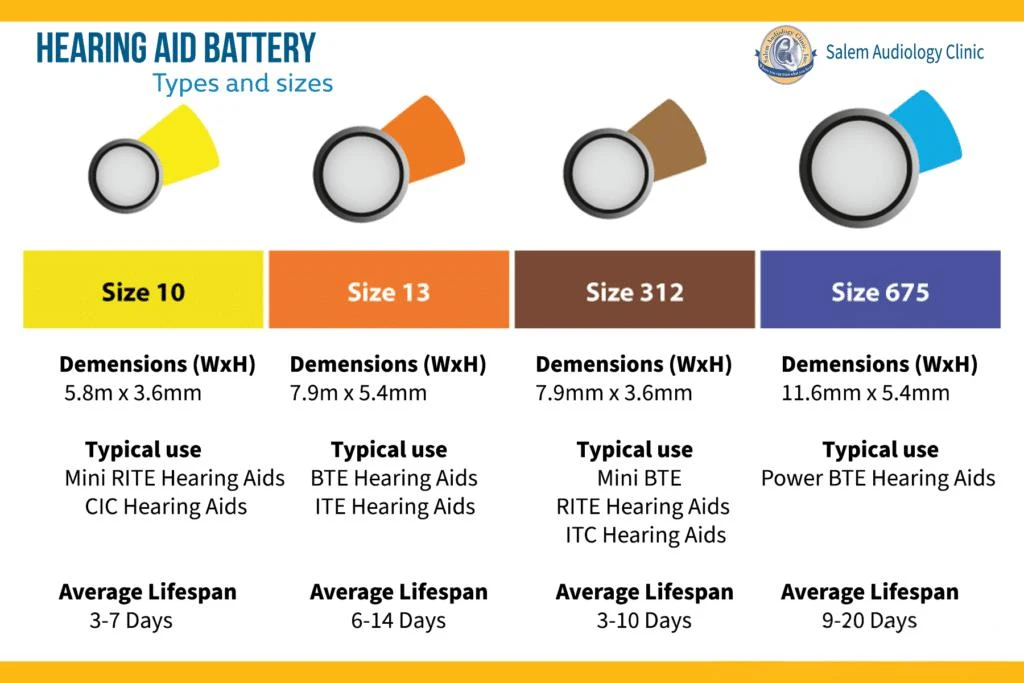

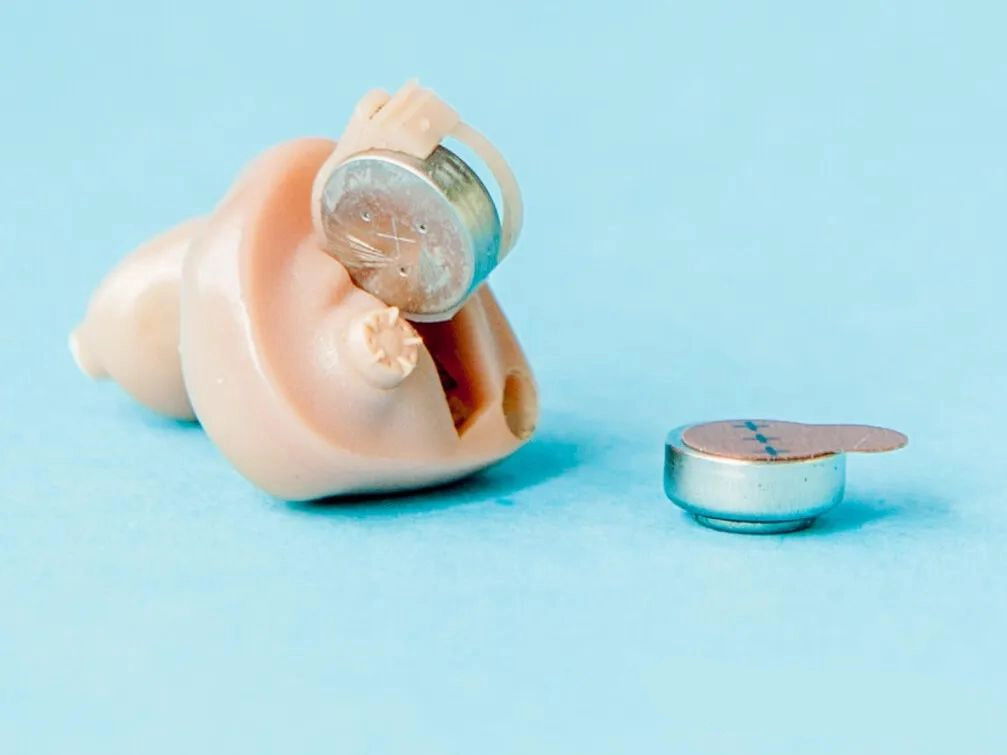
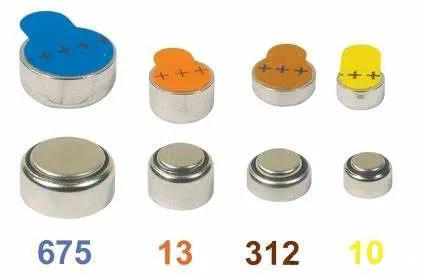

675
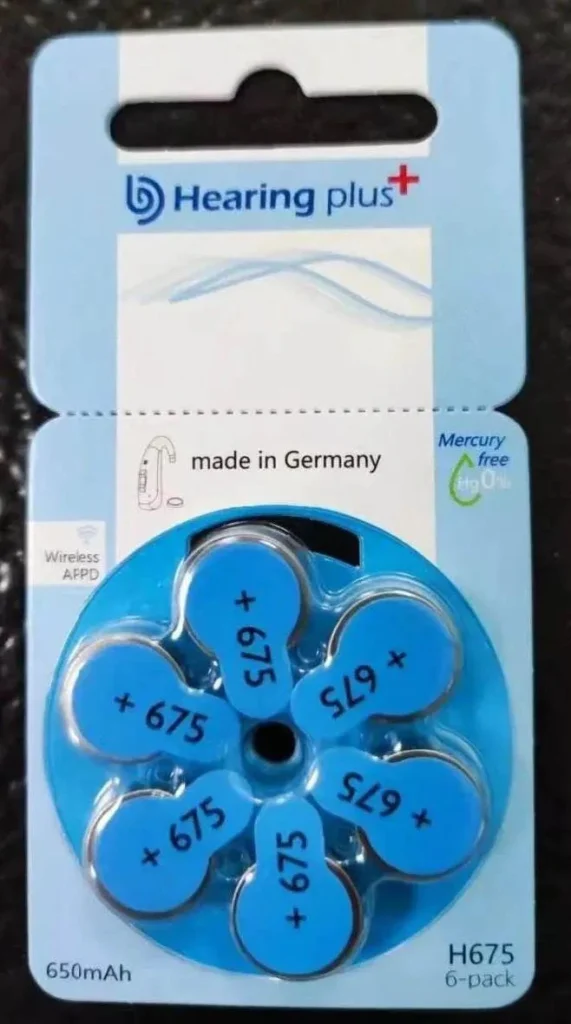
This is the largest of all the batteries, with a blue sticker on the battery, and is used mainly in powerful BTEs.

13
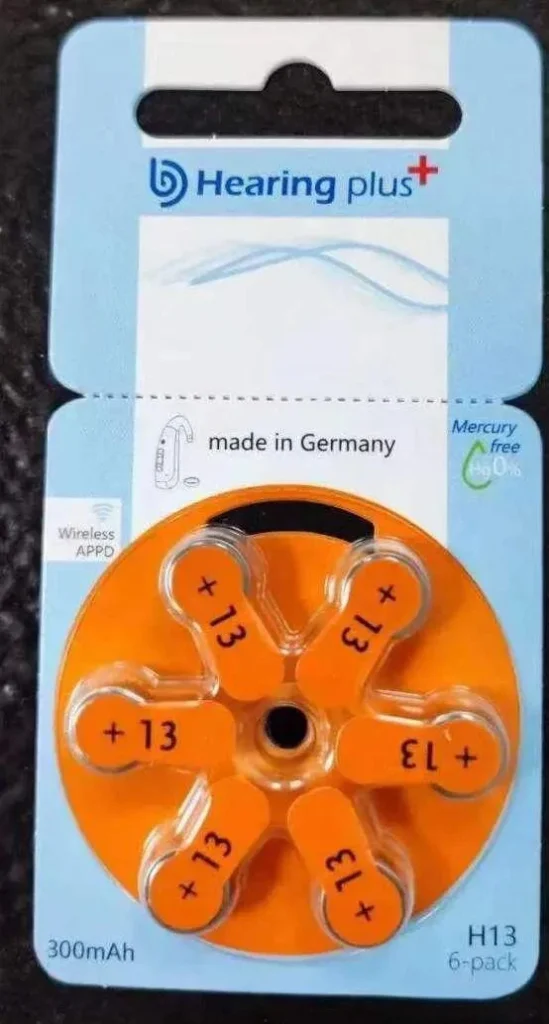
It has the same diameter as the 312 but is thicker. The sticker on the battery is orange and is used mainly in standard BTEs and ITEs.

312
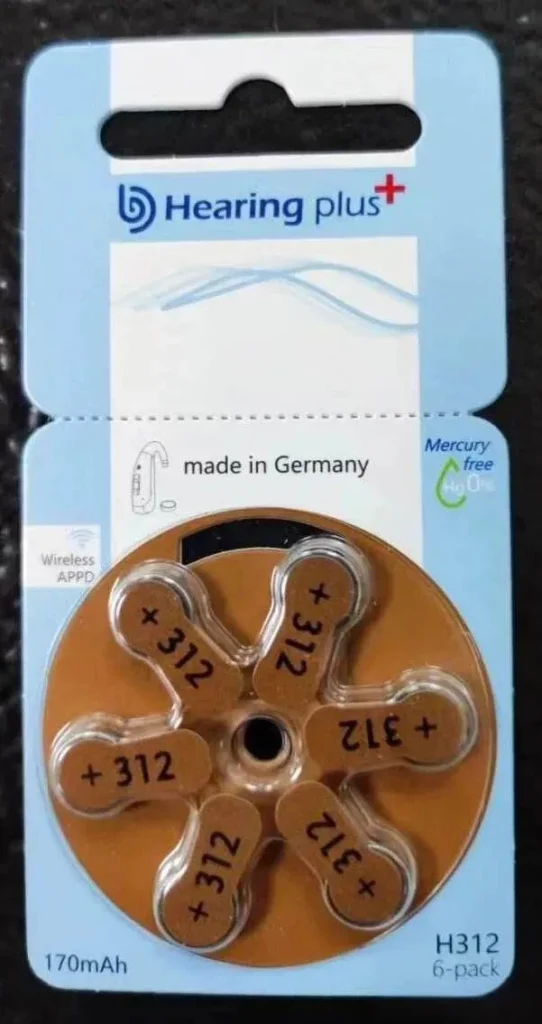
It has the same diameter as the 13 but is thinner. The sticker on the battery is brown and is used mainly in RIE/RITEs and ITCs.

10
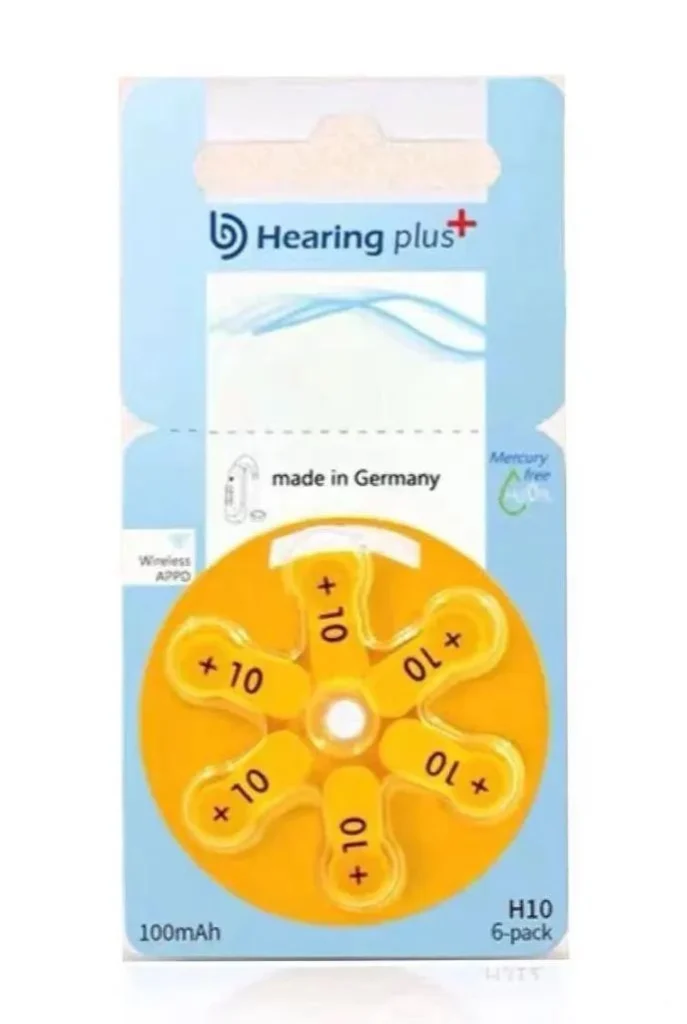
This is the smallest battery, with a yellow sticker. It is used mainly in CICs and IICs.
03 Hearing aid battery usage time
The service life of the hearing aid and the choice of the model are crucial, and the battery directly affects the normal working time of the hearing aid, as well as the gain and the degree of hearing loss. According to the actual usage situation we understand, the following time can be used for reference:
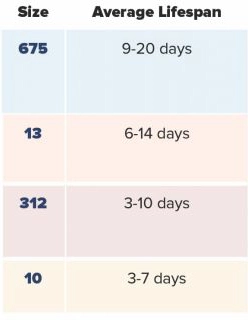
04 Factors affecting the use time of hearing aid batteries
- The degree of hearing loss
The heavier the hearing loss, the higher the gain required by the hearing aid, the greater the output power, and the corresponding increase in power consumption.
- Changes in climatic conditions
Both too high or too low temperatures may shorten the battery life, and changes in humidity may also interfere with the normal discharge of the battery.
- Sound environment factors
In a quiet environment, power consumption will be relatively low, while in a noisy environment, the volume is often turned up to listen clearly, and the battery energy consumption is also greater.
- Battery quality or storage time
The use time will be shorter for batteries of inferior quality, and secondly, if the battery is stored in a damp or exposed to direct sunlight, it may affect the service life.
05 Maintenance of hearing aid batteries
- When the battery power of the hearing aid is found to be insufficient or has run out of power, the battery needs to be replaced in time.
- If the hearing aid is not used for a long time, the battery should be removed from the hearing aid to prevent the battery from corroding and damaging the hearing aid.
- Unused batteries should be stored in a cool, dry place, away from direct sunlight, and away from moisture.
- When using the hearing aid daily, once the position of the ear hook is determined, do not rotate the ear hook any more to avoid causing the ear hook to become loose or fall off.
- The hearing aid should be frequently kept clean to avoid ear canal infections caused by earwax and bacteria.
06 How to use a hearing aid
- Disposable batteries for hearing aids should be completely packaged before use to ensure that the battery does not come into contact with air and avoid battery power loss.
- Before opening the battery packaging, you should understand the expiration date of the battery. After removing the label from the surface of the battery before use, install the battery with the ” ” side up into the battery compartment. It is best to carry spare batteries with you during the patient’s use.
Attention!!!
Hearing aid batteries are zinc-air batteries. Before use, you need to remove the seal and place it in the air for about 1 minute. Air enters the battery for a chemical reaction to produce power. If not used, do not remove the seal.





